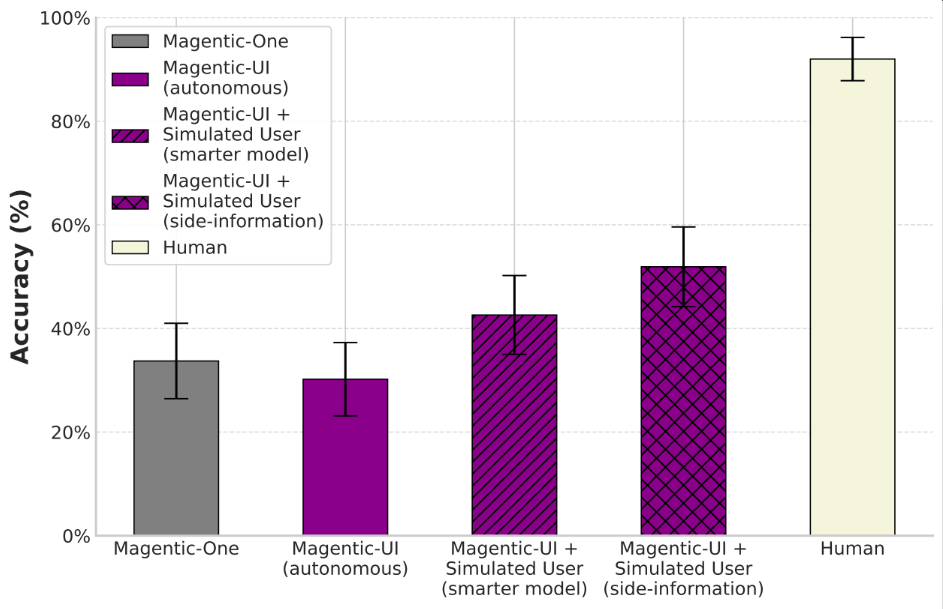
Table of Contents
Overview
In the ever-evolving landscape of AI tools, a new player has emerged from Microsoft Research: Magentic-UI. This open-source, human-centered web agent is designed to revolutionize how we interact with the web, offering a collaborative approach to task automation. Magentic-UI aims to empower users by blending AI capabilities with human oversight, ensuring a safer and more transparent web experience. Let’s dive into what makes Magentic-UI a noteworthy addition to the AI toolkit.
Key Features
Magentic-UI boasts a range of features designed to enhance user control and task efficiency. Here’s a breakdown:
- Co-planning with users: Magentic-UI doesn’t operate in isolation. It actively collaborates with users to create detailed plans for web-based tasks, ensuring alignment with user goals.
- Action guards for safety: Safety is paramount. Magentic-UI incorporates action guards, requiring user approval for critical actions, preventing unintended consequences.
- Plan learning and retrieval: The agent learns from past interactions, storing and retrieving successful plans to expedite future task execution.
- Integration with AutoGen framework: Seamlessly integrates with the AutoGen framework, leveraging its capabilities for enhanced task automation.
How It Works
Magentic-UI operates through a user-friendly browser interface. Users begin by outlining the desired task, collaboratively creating a plan with the agent. This plan breaks down the task into smaller, manageable steps. As Magentic-UI executes the plan, it seeks user approval for critical actions, ensuring that the process remains aligned with the user’s intentions. The agent then learns from each interaction, refining its planning and execution capabilities for future tasks. This collaborative approach fosters transparency and control, making Magentic-UI a powerful tool for web automation.
Use Cases
Magentic-UI’s versatility makes it applicable to a wide range of tasks. Here are a few key use cases:
- Automating web-based tasks: Streamline repetitive online tasks such as booking appointments, managing social media, or tracking inventory.
- Research assistance: Automate data gathering and analysis from various online sources, accelerating research projects.
- Form filling: Automatically populate online forms with relevant information, saving time and reducing errors.
- Data extraction: Extract specific data points from websites, compiling information for analysis or reporting.
Pros & Cons
Like any tool, Magentic-UI has its strengths and weaknesses. Let’s examine the advantages and disadvantages.
Advantages
- Enhances user control: Users maintain oversight throughout the task execution process.
- Transparent operations: The collaborative planning and approval process ensures transparency.
- Adaptable to various tasks: Magentic-UI can be applied to a wide range of web-based tasks.
Disadvantages
- Requires technical setup: Setting up and configuring Magentic-UI may require some technical expertise.
- May have a learning curve for non-technical users: Users unfamiliar with AI agents may need time to learn the system.
How Does It Compare?
The AI landscape is filled with tools designed to automate tasks. How does Magentic-UI stack up against the competition?
- AutoGen: Magentic-UI integrates with AutoGen, leveraging its capabilities.
- AutoGPT: While AutoGPT focuses on autonomous task execution, Magentic-UI emphasizes co-planning with users, offering greater control.
- LangChain: LangChain focuses on building language model applications, whereas Magentic-UI is specifically designed as a web agent.
Final Thoughts
Magentic-UI represents a significant step forward in the development of human-centered AI tools. Its collaborative approach, coupled with its safety features and learning capabilities, makes it a promising solution for automating web-based tasks while maintaining user control. While the technical setup may present a barrier for some, the potential benefits of Magentic-UI make it a tool worth exploring for those seeking to enhance their web automation capabilities.

